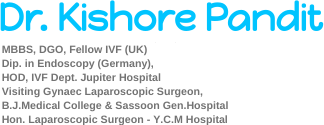Assisted Reproductive Technology
Assisted Reproductive Technology (ART) is any fertility treatment in which the egg and sperm are handled. An ART health team includes physicians, psychologists, embryologists, lab technicians, nurses and allied health professionals who work together to help infertile couples achieve pregnancy.
In vitro fertilization (IVF)
IVF is the most common ART technique. IVF involves stimulating and retrieving multiple mature eggs from a woman, fertilizing them with a man’s sperm in a dish in a lab, and implanting the embryos in the uterus three to five days after fertilization.
Other techniques are sometimes used in an IVF cycle, such as:
Intracytoplasmic sperm injection (ICSI)
In ICSI, a single healthy sperm is injected directly into a mature egg. ICSI is often used when semen quality is a problem, there are few sperm, or if fertilization attempts during prior IVF cycles failed.
Laser Assisted hatching
This technique attempts to assist the implantation of the embryo into the lining of the uterus by opening the outer covering of the embryo (hatching).
Donor eggs or sperm
Most ART is done using the woman’s own eggs and her partner’s sperm. However, if there are severe problems with either the eggs or sperm, you may choose to use eggs, sperm or embryos from a known or anonymous donor.
Gestational carrier / Surrogacy
Women who don’t have a functional uterus or for whom pregnancy poses a serious health risk might choose IVF using a gestational carrier. In this case, the couple’s embryo is placed in the uterus of the carrier for pregnancy.
Embryo Freezing Excess (Surplus)
Embryos can be Cryo-preserved at ultra low temperatures for many years. These frozen embryos can be used subsequently, without the need for ovarian stimulation and egg retrieval.
Semen/Sperm freezing
Semen/Sperm can be stored frozen at ultra low temperatures for a longer duration which could be helpful in a variety of circumstances – semen freezing prior to chemotherapy, inability of the male partner to be present or to deliver the semen on the day of procedure, testicular biopsy/sperm freezing to avoid repeated biopsies, donor semen, etc.
